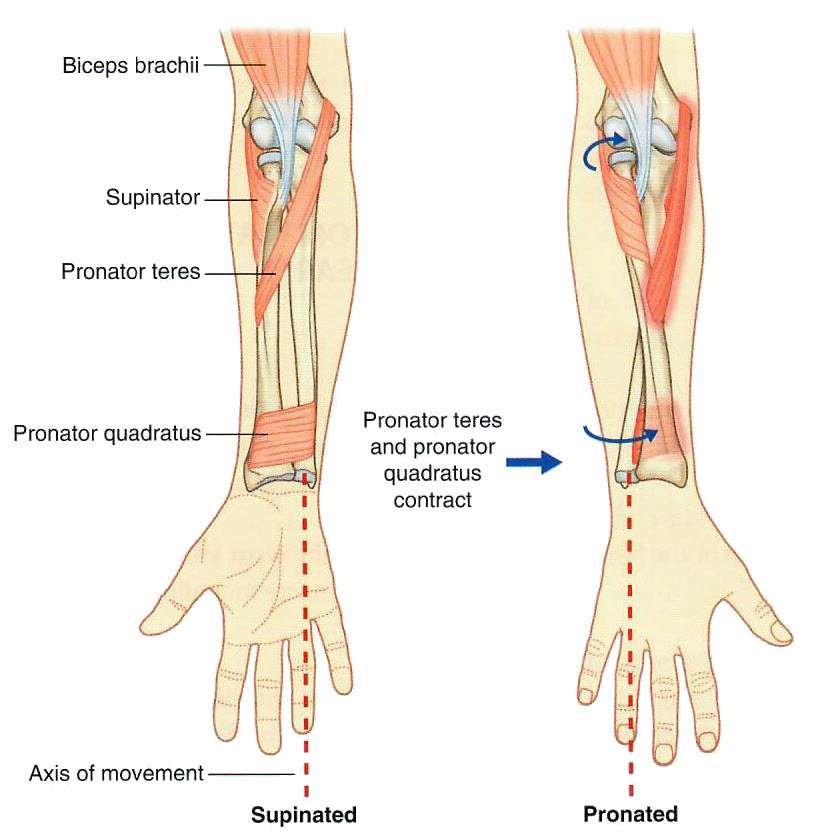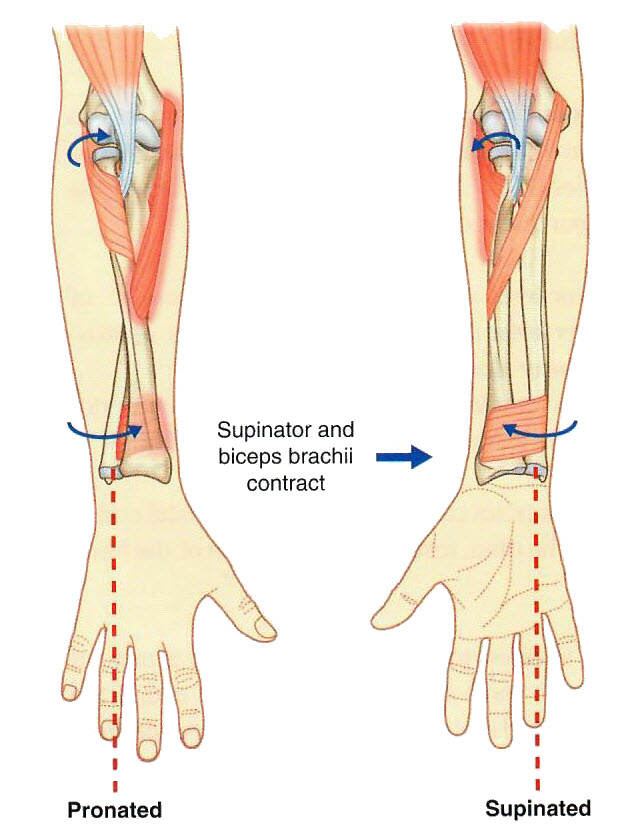
Lab3 - Module 2 - Anatomy of the Arm and Forearm: Page 7 of 11
Pronation and Supination
What does the word "pronate" mean? |
|
|
It is derived from Latin, and means to bend forward. So that in this case, it means to rotate the forearm so that the palm of the hand is facing posterior. This term can be used with the foot too. Remember, to turn someone into the prone position is to roll them from there back onto their stomach. |
|
What muscles accomplish pronation of the forearm? |
|
|
The pronator quadratus and the pronator teres. When they contract, the radius rotates at the elbow and the distal radius crosses over the ulna. They are assisted by the anconeus muscle which is part of the postier muscle group. 
|
|
The opposite of pronation is supination. Supination is the anatomic position.
To return from pronation to supination, what must happen? |
|
|
The radius must rotate back to its original position. |
|
Where are the muscles located that work to accomplish maneuver? |
|
|
The supinator and the biceps brachii are located in the posterior compartment of the forearm. A discussion of these muscles will occur in Lab 4. 
|
|